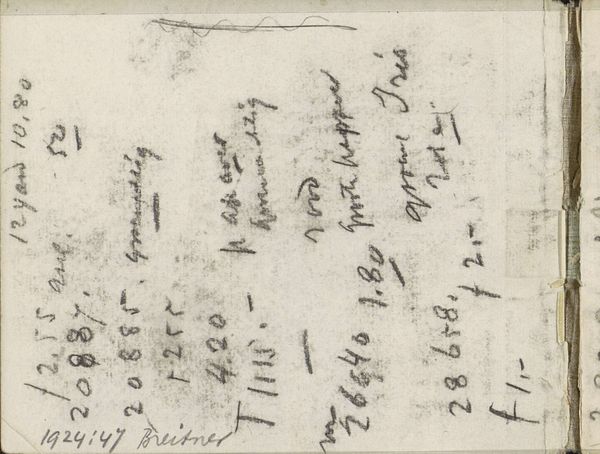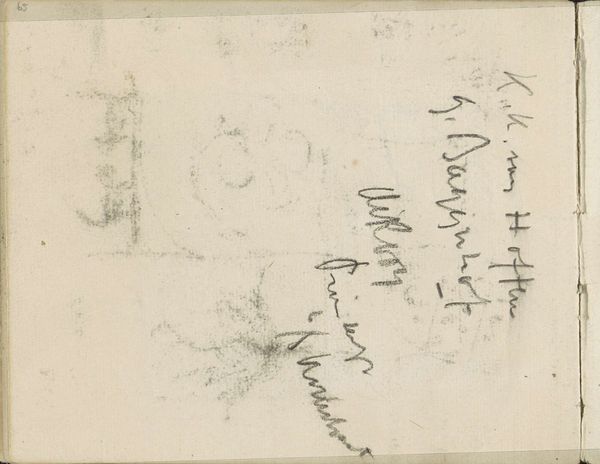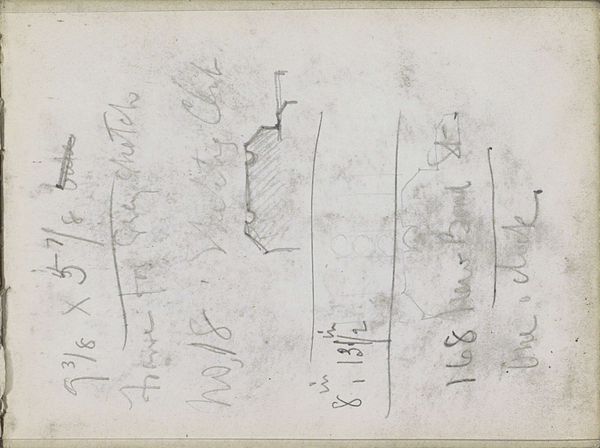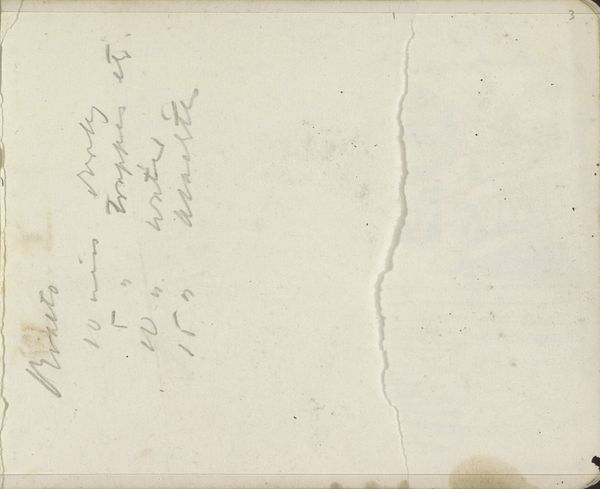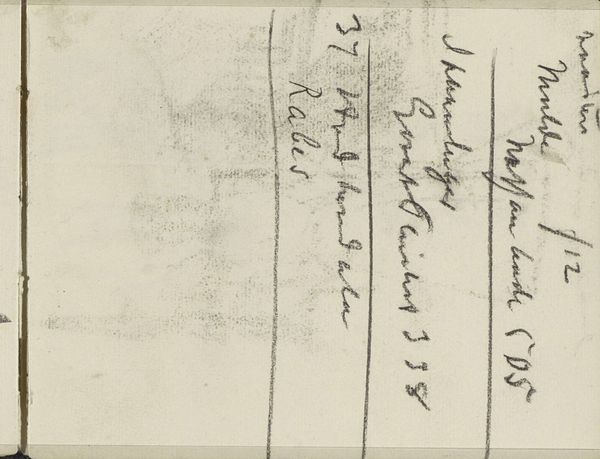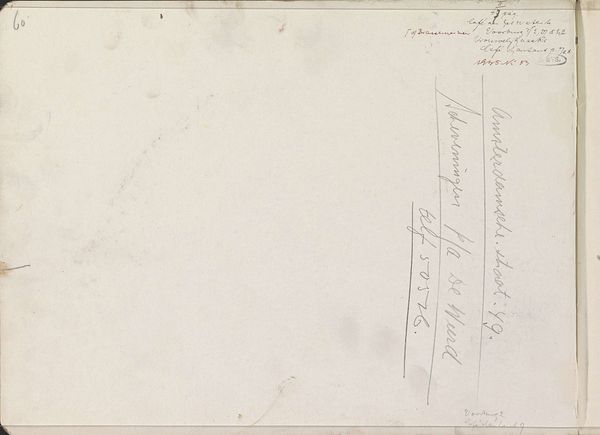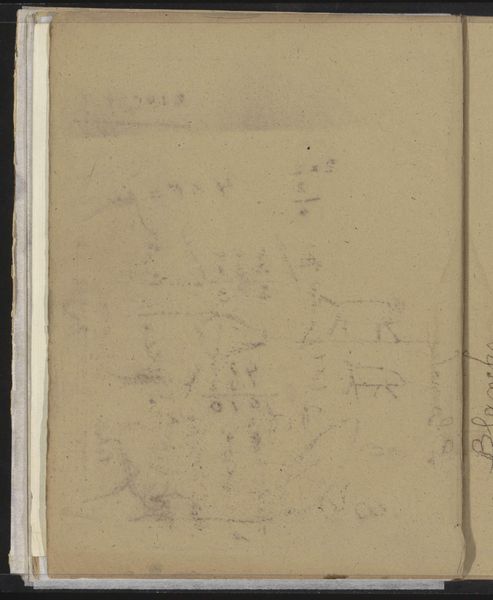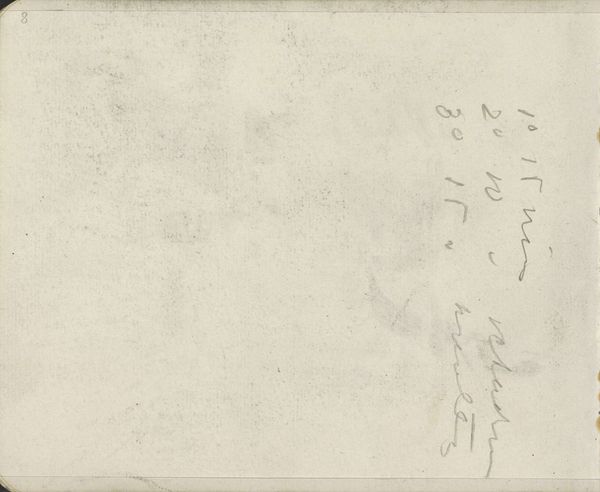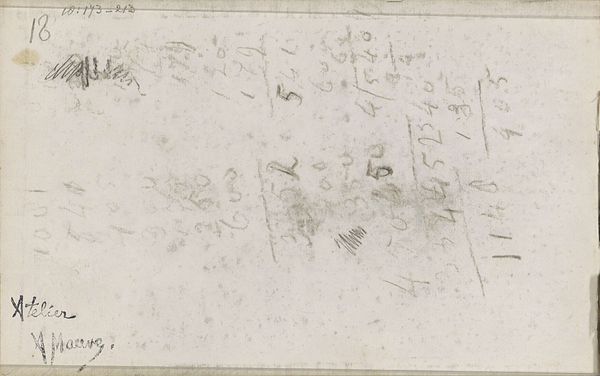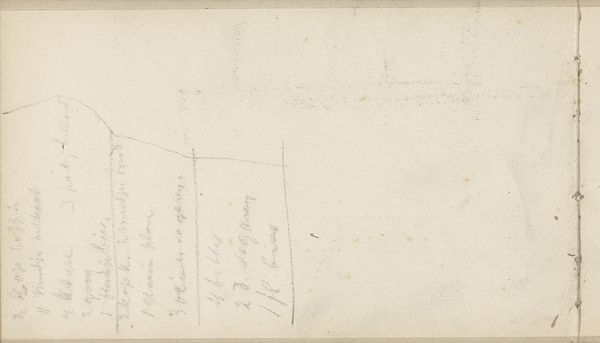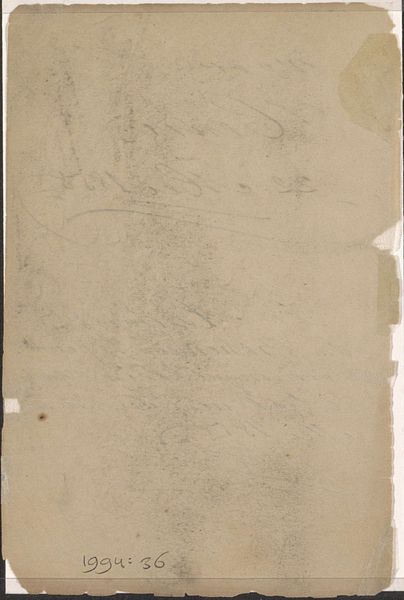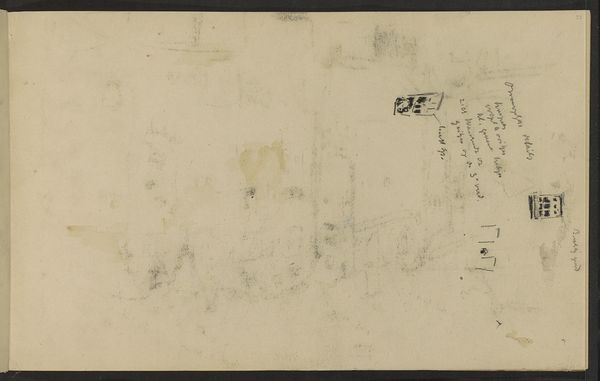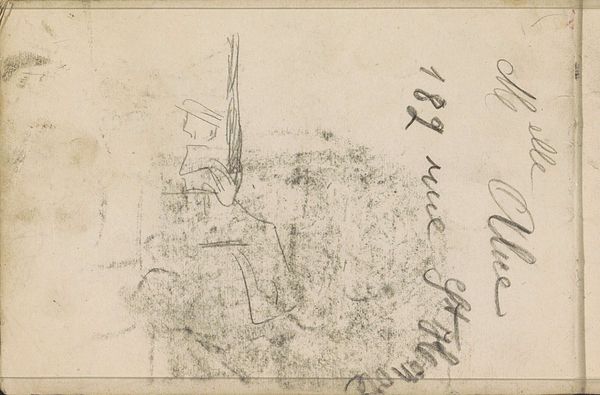
Copyright: Rijks Museum: Open Domain
Editor: Here we have George Hendrik Breitner's "Annotaties," created sometime between 1886 and 1903. It looks like ink and possibly watercolor on paper, and feels incredibly raw, like a fleeting thought captured directly onto the page. What can you tell me about the context of such a seemingly personal piece being in a museum? Curator: It’s intriguing, isn't it? Breitner's sketchbooks provide invaluable insight into his artistic process. These weren't intended for public display initially, making their presence in the Rijksmuseum a fascinating shift in how we value art. Think about the changing role of museums; what does it signify when we elevate private studies to the level of public artifacts? Editor: It's like peeking behind the curtain. Does this kind of unfiltered view influence our understanding of Breitner's more polished works? Curator: Absolutely. Consider the period – the late 19th century. The rise of Impressionism and early Modernism saw artists challenging traditional academic approaches. Breitner, known for his street scenes and portraits, used sketchbooks to experiment and document his observations. By showing these "Annotaties", the museum arguably democratizes the art world. Instead of a finished, idealized product, we're presented with the messy, human side of creation. Does that shift change how we interpret art’s function in society? Editor: I guess seeing the initial creative act validates the art differently – I can understand it and also see art as a possibility for everyone. It is great seeing museums showing something other than highly finished paintings. Curator: Precisely. Museums exhibiting sketchbooks suggest that the creative process is just as valuable as the final result, transforming the artwork’s perceived social and cultural importance. It emphasizes the everyday, the personal, and the constant negotiation between artist and environment. I wonder, how do you feel it changes the power dynamic between the artist and the viewer? Editor: That’s a really interesting point. It flattens the hierarchy, in a way. Thanks; I’ll never see a museum the same way again! Curator: My pleasure; art is all about conversation!
Comments
No comments
Be the first to comment and join the conversation on the ultimate creative platform.
